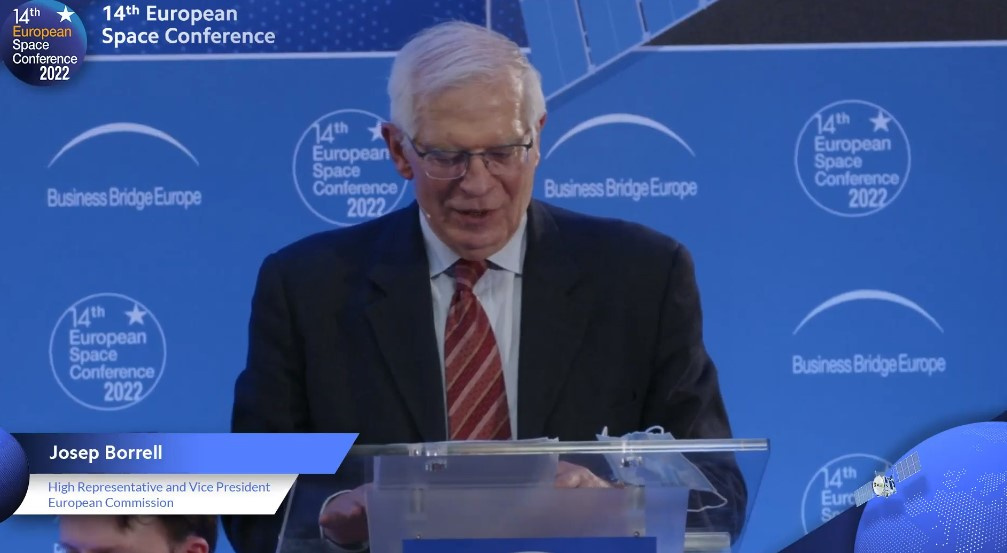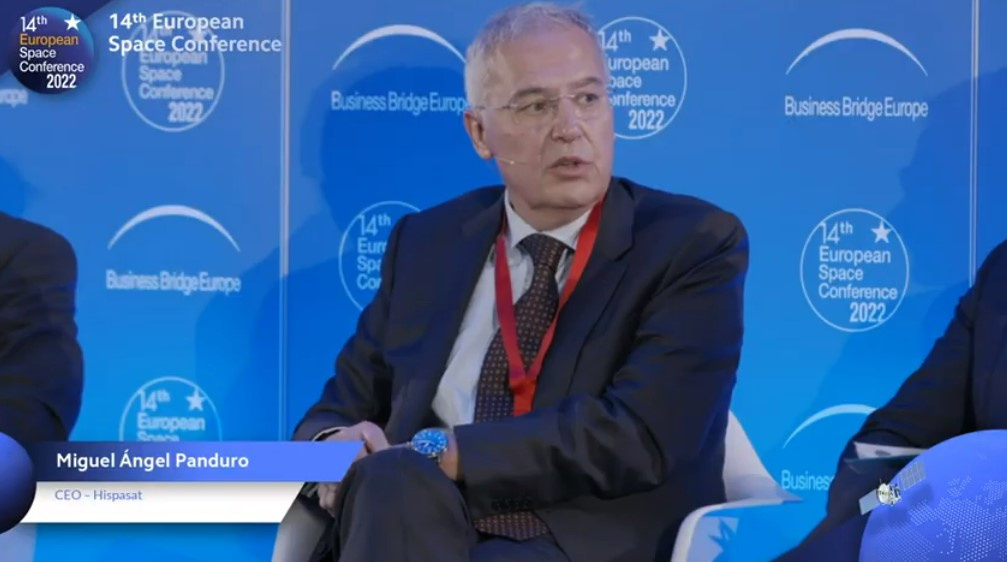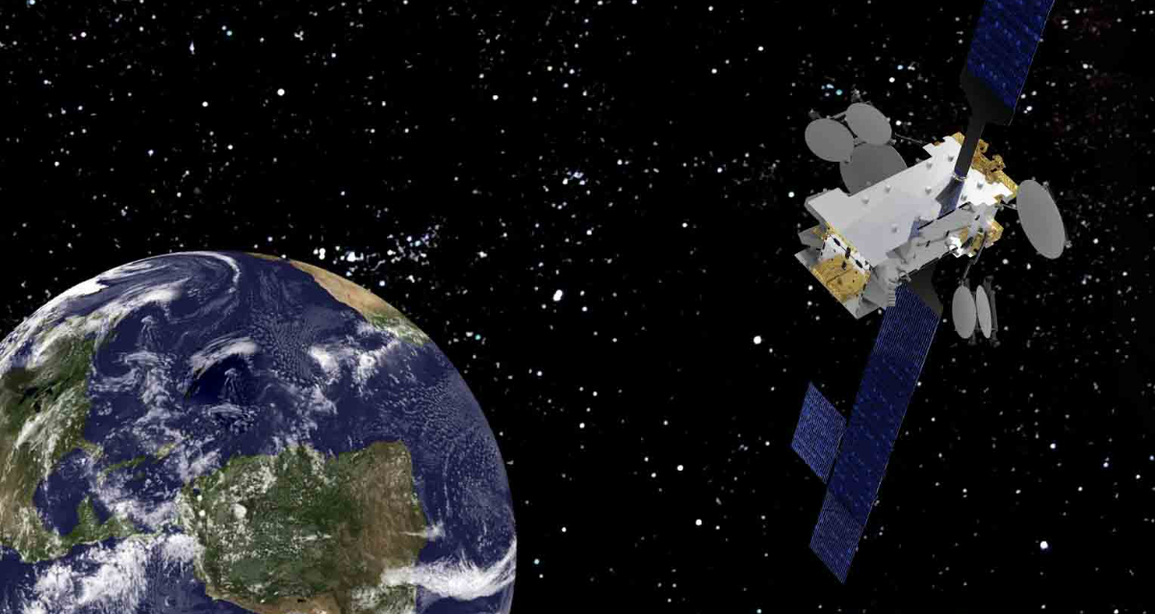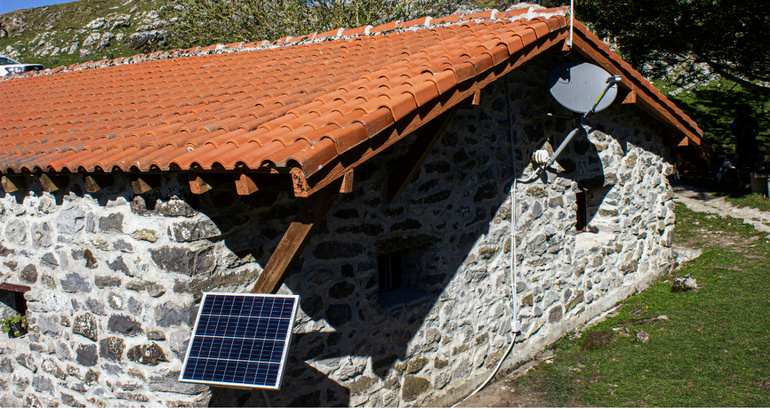
"Thirty years ago, when I was a young Minister of Public Works and Transport, I attended the launch of the first Spanish communications satellite, Hispasat 1A, in French Guiana in 1992." This was commented by Josep Borrell, high representative of the European Union for Foreign Affairs and Security Policy and vice-president of the European Commission, during his speech at the 14th edition of the European Space Conference, which took place this week in Brussels.

Josep Borrell, during his speech at the European Space Conference.
Indeed, Borrell was one of the personalities who witnessed a launch of capital importance for Spain from the Arianespace facilities in Kourou. Today, the world of satellites has changed radically and faces enormous possibilities and challenges; while HISPASAT, that company that at that time joined a very restricted club of countries with their own satellite, is currently the third communications operator on the continent and works together with other major companies in the sector in the definition of a European satellite connectivity system.
In the speech that opened this year's European Space Conference, the European Commissioner for the Internal Market, Thierry Breton, stated that this new system, whose legislative proposal will be formalized in the coming weeks and whose first services are expected to begin to be provided in 2024, is one of the main pillars on which European space policy must be based. Not in vain, this multi-orbit system (it will combine high, medium and low orbits) has as its main objectives granting independence to Europe in this area and providing high-speed connectivity services to all member countries, in addition to acting as an element of space resilience for terrestrial infrastructures and as a vanguard in the development of secure communications technologies, such as quantum key distribution (QKD).

Miguel Ángel Panduro pointed out the importance of acting now to guarantee European independence.
For Miguel Ángel Panduro, CEO of HISPASAT, “this system will provide European citizens with a solution to the digital divide through a mix of different GEO, MEO and LEO technologies that allow guaranteeing 100 Mbps in 2025, as established by the Digital Agenda. ”. And this requires, therefore, that this solution adjusts to the demand of society. “There are already several non-European projects underway, with hundreds of satellites in orbit and supported by enormous investments, which call into question European autonomy in this area. It is important that Europe reacts and it is crucial that it does so on time, that it can have access to funds and that this new constellation is attractive to our market and does not distort it," concluded Panduro, who participated in a panel on this topic alongside Thomas Skordas -Deputy Director General of DG Connect in the EC-, Ekaterini Kavvada -Director of Innovation and Development of DG DEFIS in the EC-, Elodie Viau -Director of Telecommunications and Integrated Applications at ESA- and Steve Collar -CEO of SES -.

We acquired the participation of Telemar (Oi) in HISPAMAR Satélites to obtain all of its share capital and continue to be the reference operator in the Spanish and Portuguese markets in the region

We joined Fundación Repsol to provide satellite solutions to the largest project of this type in Spain.

In Redeia, through HISPASAT and Elewit, it leads a pilot project in which it works with the IoT solutions integrator Nexmachina to implement in the area a series of connectivity applications aimed at improving the conditions of the shepherds in their cabins, guaranteeing their security and optimize the resources of the municipalities in the area.